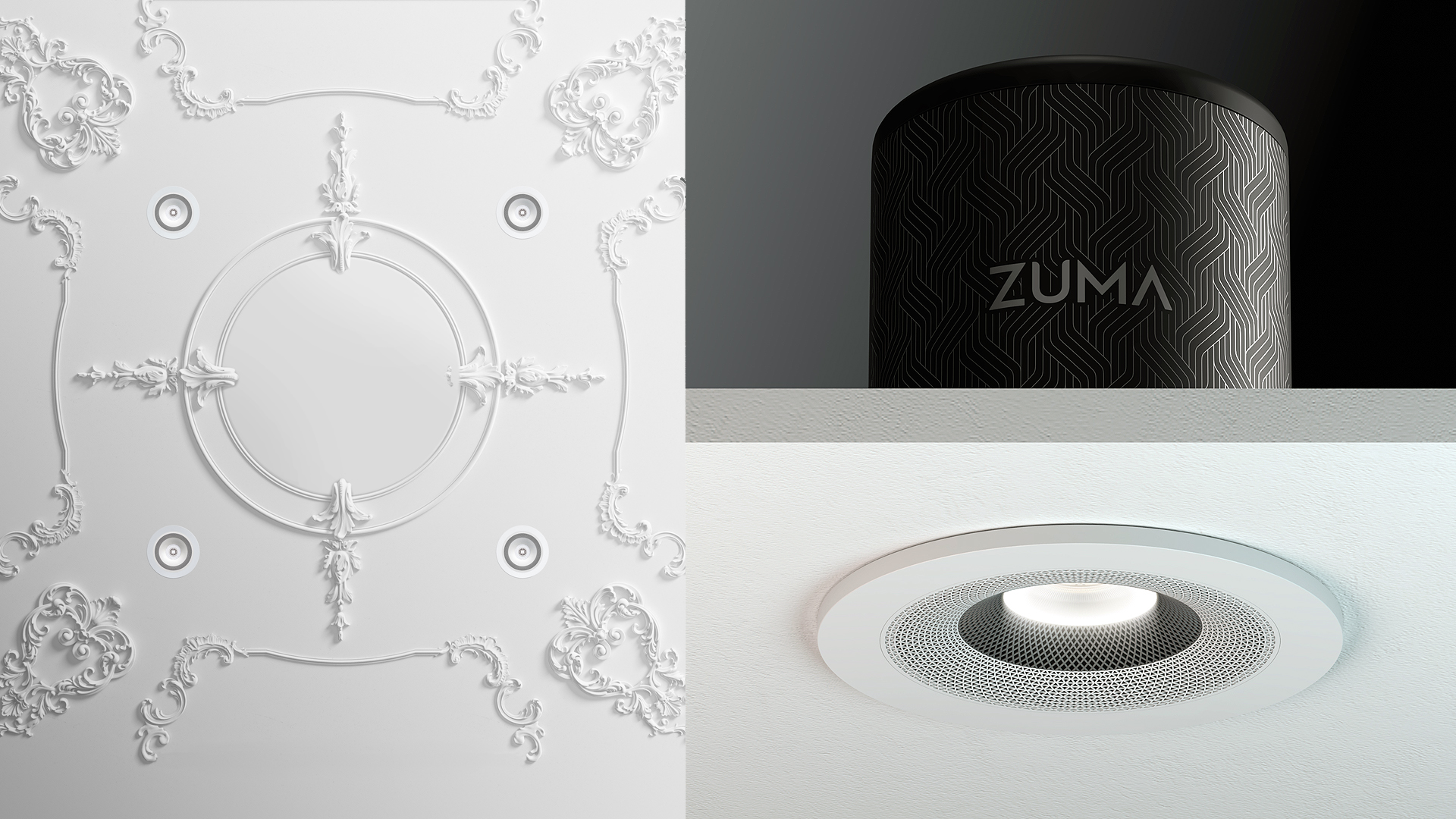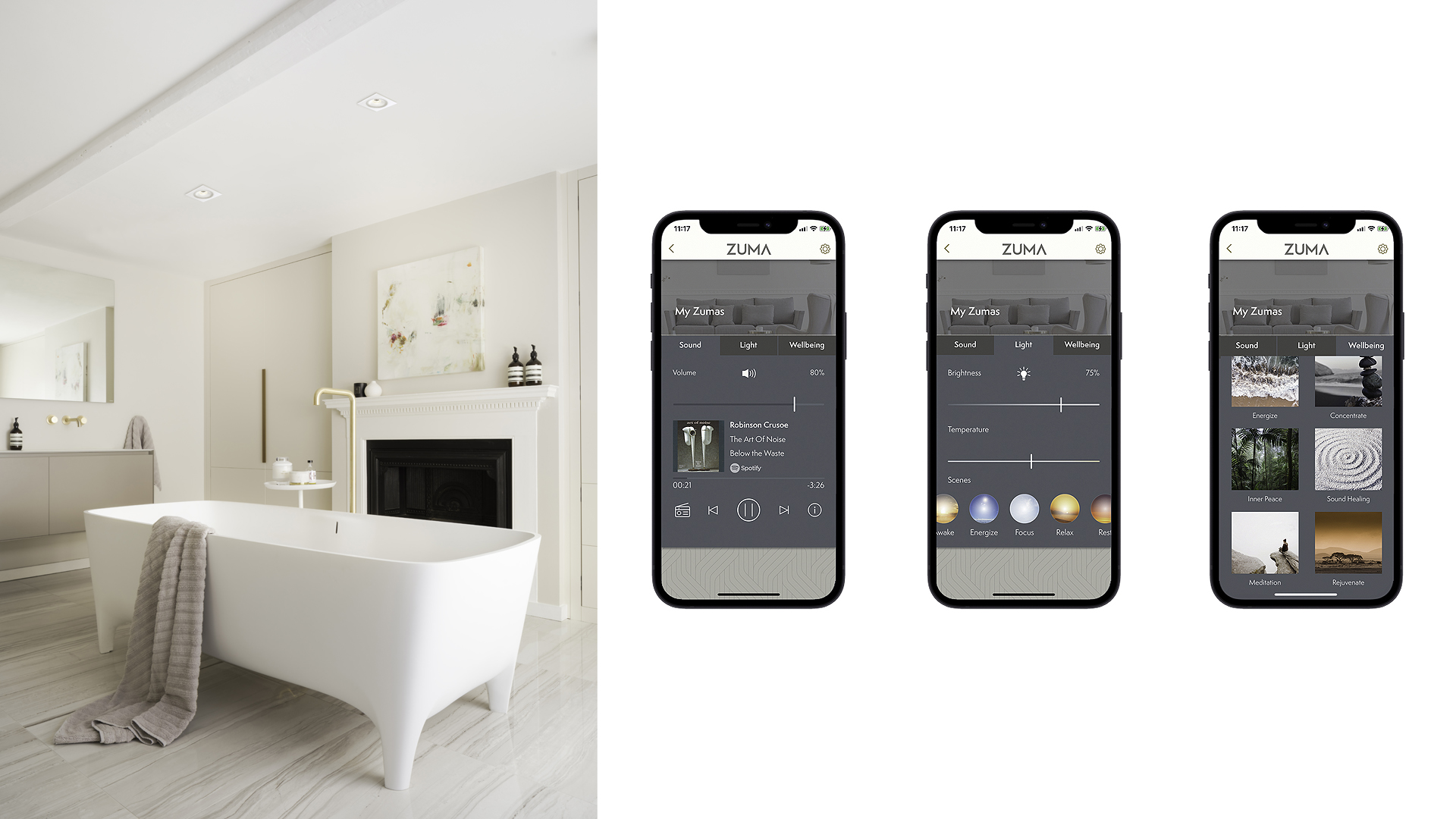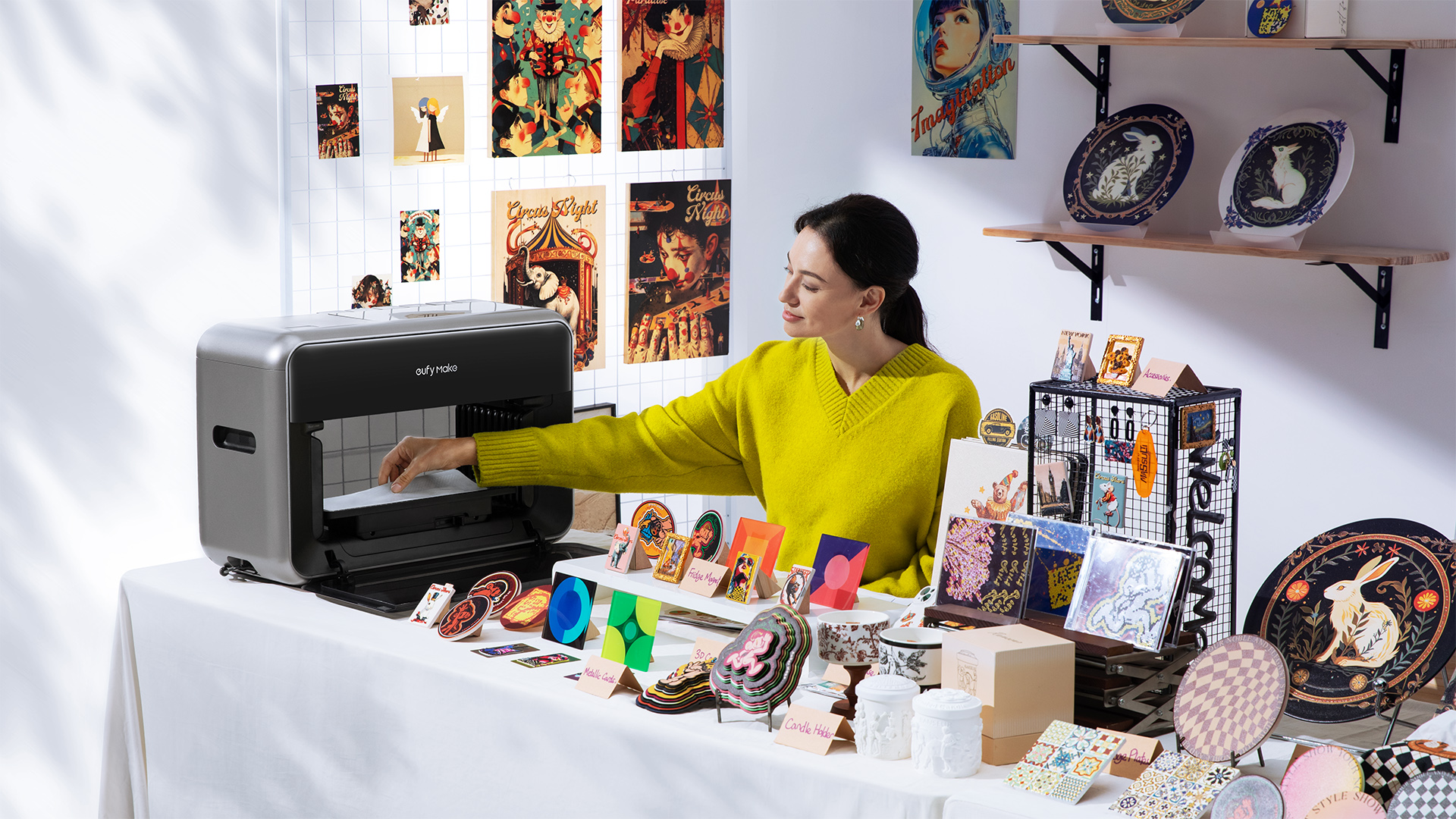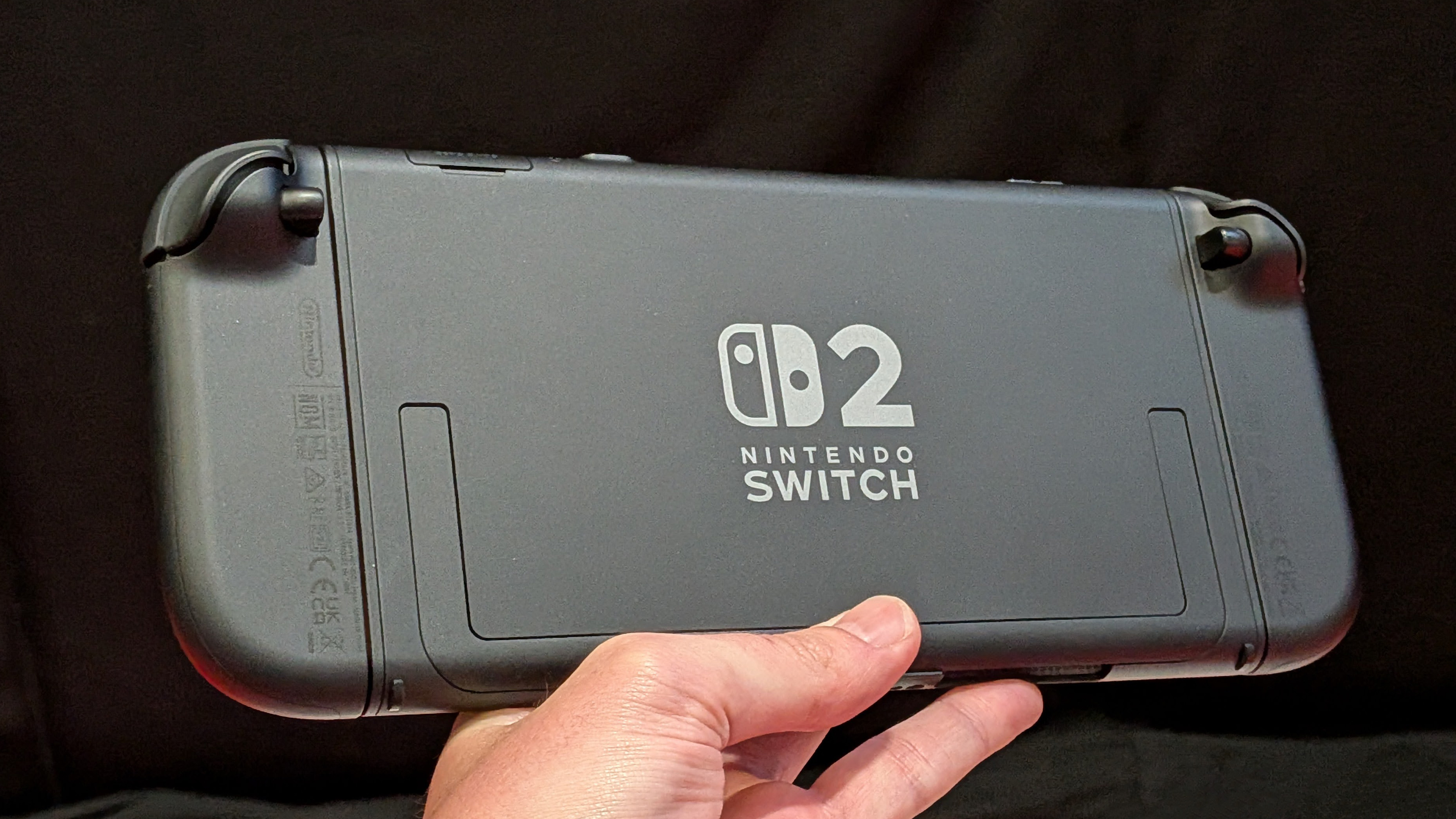

What is Zuma? As well as being a character from, er, Paw Patrol, it is also a voice-controlled smart light and speaker that fits precisely into the hole cut for a ceiling spotlight. With the full name Zuma Lumisonic, it's not only a very smart bit of design – the push-up spring blades that hold the unit in place really are poetry in motion – it's also a very practical solution to two home upgrade problems. Because in one device, Zuma lets you install a multi-room, stereo speaker system designed in conjunction with geniuses from Naim and Bowers & Wilkins, and a Hue-esque LED smart lighting system.
Sonos is best known for its visible speakers and soundbars such as Sonos One and Sonos Arc, but it also does very well out of the custom install market, with its 'Architectural' line. Zuma isn't specifically intended to be a rival to Sonos but it is quite interesting to compare them. It is also a Hue rival, particularly if you opt for the Zuma Luminaire, which is a voice-controlled LED spotlight only, with no speaker. Boring.
Zuma: price and availability

In the UK, Zuma Lumisonic speaker/light is available now for £375. The Luminaire spotlight launches later this summer, for £125. The pricing includes a survey of your home to ensure installation is possible and 'to make sure that you’ll get the absolute best sound and light experience from your Zuma units.'
Zuma is UK only for now but equivalent US and Australian pricing would be $520/AU$690 for Lumisonic and $175/AU$230 for Luminaire.
This pricing compares quite favourably to Sonos. A pair of Lumisonics is £750 – each unit is stereo but you probably need two as a minimum in most rooms bigger than a downstairs toilet – whilst a pair of Sonos In-Ceiling Speakers costs £699. However, when you factor in the installation costs and chasing wiring in for the Sonos, there is unlikely to be much between them. In a best case scenario, Zuma can be fitted and working in a matter of minutes. £125 per light for the Luminaire is also not vastly more expensive than some Hue bulbs.
Is Zuma any good?
For one of the first times since lockdown, I actually went and met someone in person for this – oh yeah. Specifically, I popped along to Zuma's London HQ/showroom to meet managing director Stuart Collingwood and have a bit of a demo, just like in the old days.
Sign up to the T3 newsletter for smarter living straight to your inbox
Get all the latest news, reviews, deals and buying guides on gorgeous tech, home and active products from the T3 experts
With just two speakers, the Zuma Lumisonic puts out a seriously impressive sound field, with far more bass and volume than you would expect from such a small and unusually-placed speaker. Beef it up to a much bigger array of speakers – I didn't actually count but I think it was 12 or so – and of course, the effect is even more impressive.
The audio side of Lumisonic was done in conjunction with Laurence Dickie of Bowers & Wilkins and Trevor Wilson, formerly of Naim and also responsible for packing speaker systems into the oaken panels of Bentleys. So, as you can imagine, this is a great sounding ceiling speaker. That might sound like damning with faint praise, as most ceiling speakers are quite crap, but the sound from Zuma's cylinder of son et lumière was seriously impressive.
The lighting was also very effective, covering a full range of moods from invigorating to chilling the hell out. Control, via an app or Alexa – currently using an Echo, although there are plans to incorporate it directly into Zuma – seemed seamless enough.
Helping to maintain connectivity and keep the speakers in sync, the app and Alexa only actually connect to one speaker. A mesh network to the others is automatically set up from there, which should prove a very robust solution.
Perhaps pushing their luck a bit, Zuma also intends to include yet more features in the Lumisonic in future. At present, there's a choice of magnetically-attached bezels to match your décor. In the near future, Zuma intends to add frames that also include various sensors – smoke alarms, for instance – and even security cameras. Hopefully in a few years, they'll also be able to dispense coffee and give you a scalp massage.
Having said that, there are a few obvious features missing from Zuma 1.0. The LED lighting element is white only – RGB LEDs have proven to be the one thing that can't be crammed into the available space. So you will just have to make do with 1,000 shades of white light for the time being.
Also, while the first thing most people will think of when presented with a downward firing speaker is Dolby Atmos and surround sound in general, Zuma Lumisonic is strictly stereo only, at least for now.
Zuma: features and spec

Don't drop your phone in the bath
The killer feature of Zuma is that it can sit in a standard sized spotlight cavity and connect to the wiring for your lighting. Well, that's one killer feature. It's also a great-sounding speaker and a very expressive lighting system.
Light
555 lumen @ 3000K, 574 lumen @ 5000K, 56º Beam Angle
CCT: 3000K - 5000K, 90CRI
Speaker
75W max (co-axial 2 driver configuration), Stereo 2-way; DSP-optimised sealed acoustic system.
Supports Apple AirPlay 2, Spotify® Connect, Bluetooth BLE v4.2, Internet Radio, Works with Alexa. Supports WAV, FLAC and AIFF up to 24bit/192kHz, ALAC (Apple Lossless) up to 24bit/192kHz, as well as MP3 and AAC.
Connectivity
Ethernet (10/100Mbps) or Wi-Fi up to 802.11AC. Electrical connection is 230V, 50/60Hz.
More sound and vision
Duncan is the former lifestyle editor of T3 and has been writing about tech for almost 15 years. He has covered everything from smartphones to headphones, TV to AC and air fryers to the movies of James Bond and obscure anime. His current brief is everything to do with the home and kitchen, which is good because he is an excellent cook, if he says so himself. He also covers cycling and ebikes – like over-using italics, this is another passion of his. In his long and varied lifestyle-tech career he is one of the few people to have been a fitness editor despite being unfit and a cars editor for not one but two websites, despite being unable to drive. He also has about 400 vacuum cleaners, and is possibly the UK's leading expert on cordless vacuum cleaners, despite being decidedly messy. A cricket fan for over 30 years, he also recently become T3's cricket editor, writing about how to stream obscure T20 tournaments, and turning out some typically no-nonsense opinions on the world's top teams and players.
Before T3, Duncan was a music and film reviewer, worked for a magazine about gambling that employed a surprisingly large number of convicted criminals, and then a magazine called Bizarre that was essentially like a cross between Reddit and DeviantArt, before the invention of the internet. There was also a lengthy period where he essentially wrote all of T3 magazine every month for about 3 years.
A broadcaster, raconteur and public speaker, Duncan used to be on telly loads, but an unfortunate incident put a stop to that, so he now largely contents himself with telling people, "I used to be on the TV, you know."

